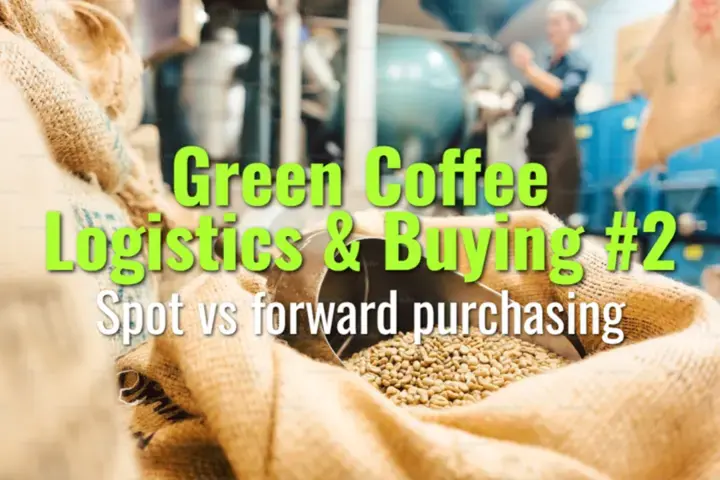Spot vs forward purchasing
This topic explains the difference between spot and forward purchasing in green coffee trade, their advantages and risks, and how buyers and producers use them to manage supply and pricing.
- Coffee Basics Nerds
- 2 min read
Article 2 of 12 in Green Coffee Logistics & Buying/

Spot Purchasing
- Definition: Buying coffee available immediately, often from a warehouse or importer stock.
- Pricing: Based on current market rates.
- Advantages:
- Fast access to coffee.
- Flexibility for roasters needing quick supply.
- Lower risk if demand is uncertain.
- Disadvantages:
- Exposure to market volatility.
- Limited traceability if lots are blended.
- Specialty micro-lots may not be available.
Forward Purchasing
- Definition: Contracts to purchase coffee for future delivery (weeks, months, or harvests ahead).
- Pricing: May be fixed price or tied to market differentials (e.g., ICE futures + premium).
- Advantages:
- Locks in supply from specific farms or regions.
- Provides producers financial security and predictability.
- Strengthens relationships and enables long-term planning.
- Disadvantages:
- Risk if market prices drop after contract is signed.
- Requires capital planning and forecasting.
- Buyer depends on producer fulfilling quality and volume commitments.
When Each Is Used
- Spot:
- Small roasters or importers with limited storage.
- Bridging supply gaps.
- Testing new origins or processes.
- Forward:
- Larger roasters needing predictable supply.
- Direct trade partnerships.
- Specialty buyers securing competition or high-scoring lots.
Risk Management
- Spot purchases = high exposure to short-term price fluctuations.
- Forward purchases = hedge against volatility but risk of misalignment with future demand.
- Many roasters use a mix of both for flexibility and stability.
Market Implications
- Forward contracts help stabilize farmer income and encourage quality investments.
- Spot trade supports liquidity and quick movement of coffee in global markets.
Lasting Importance
Understanding spot vs forward purchasing allows both buyers and producers to balance flexibility, risk, and stability. Together, they form the backbone of global coffee supply chains, connecting immediate needs with long-term sustainability.